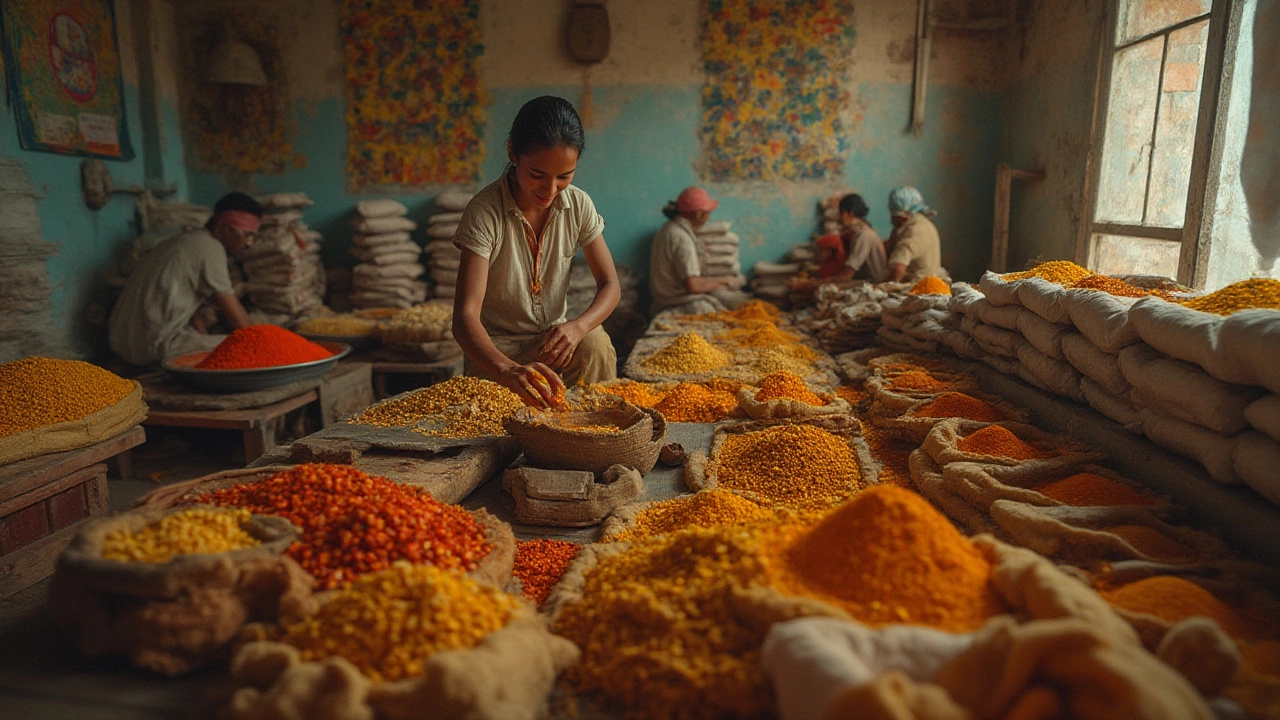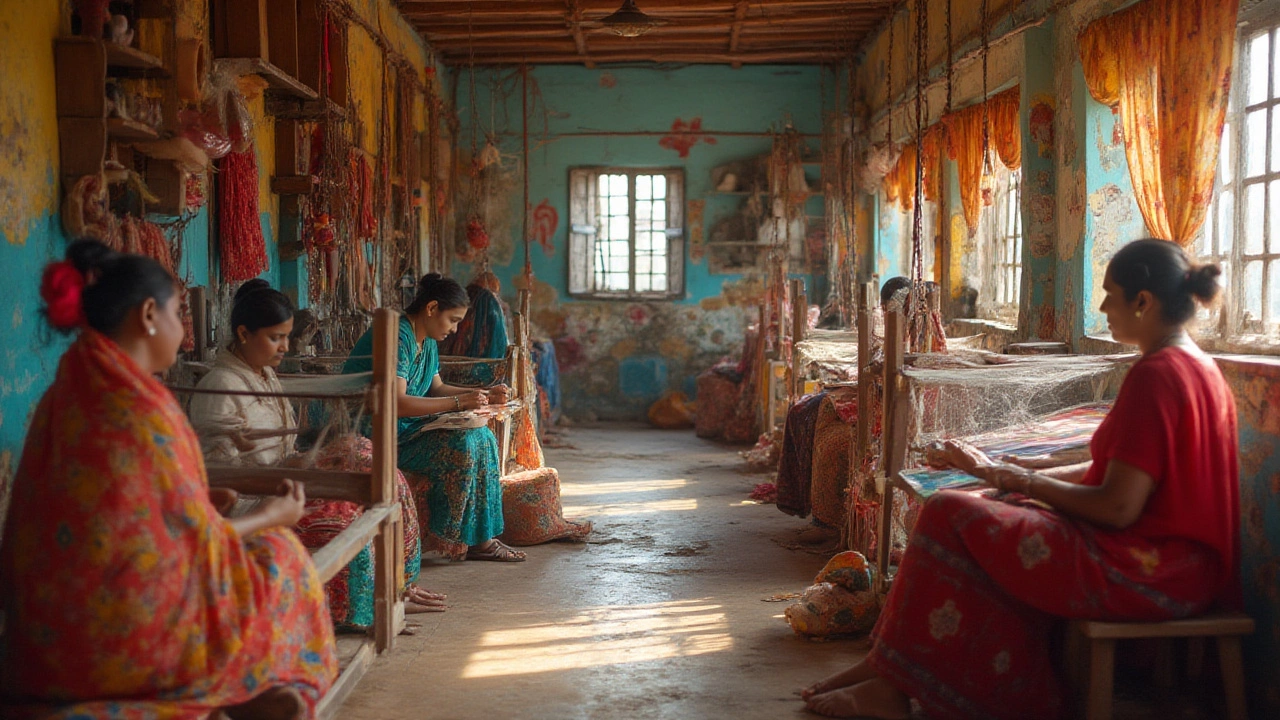Ever wondered what makes a small factory tick, quietly creating ripples in the job market, but rarely making headlines? That's the kind of impact a Small Scale Industry (SSI) has. In India, talk about SSIs pops up everywhere, from government policy discussions to dinner table conversations at my house—Priya, my spouse, is convinced their true impact is underrated. Even if you haven’t noticed, SSIs are everywhere: from the microfiber towel in your gym bag to the precision gears whirring away in your ceiling fan.
Defining SSI: What Counts and Why It Matters
So, what exactly is an SSI? In India, an SSI or Small Scale Industry is a business that invests up to Rs. 10 crore in plant and machinery for manufacturing (and up to Rs. 5 crore for services). These units are defined by their investment size and are separate from micro and medium enterprises. Their modest scale doesn’t mean their impact is minor—SSIs collectively employ over 110 million people, making them the second largest employer after agriculture. Financial analysts have pointed out that over 45% of India’s total exports come from these seemingly humble units. Want a taste of their diversity? Think handicrafts, toys, packaged snacks, machine parts, and bespoke furniture—or even the colorful glass bangles you see in wedding bazaars.
One big reason for their importance is accessibility. You don’t have to be a Tata or Birla to launch an SSI. All you need is a solid idea, some initial capital, and the grit to power through. This is why they’re consistently encouraged through government incentives, loans, and subsidies. The 2023 MSME report from India’s Ministry of Micro, Small & Medium Enterprises spells it out well: these businesses help bridge urban-rural divides, drive local innovation, and reduce dependency on large-scale imported goods. The ripple effect? More entrepreneurial spirit, lower unemployment, and better self-reliance for the country.
SSI Example: Textile Weaving Unit in Surat
No, this isn’t some abstract definition. Here’s a real-life story. Take a textile weaving unit in Surat, Gujarat. The family owns twenty looms; they buy yarn from local traders and produce about 6000 meters of cloth every week. Their annual investment in plant and machinery stays well under Rs. 5 crore, keeping them categorically SSI. But don’t underestimate their reach. These small entrepreneurs cater to markets in Mumbai, Delhi, and even Dubai. Job-wise, each weaving unit provides work for twenty to thirty people. The purple saree my mother wore on my wedding day? Probably passed through hands like theirs.
This model offers agility—you can tweak designs, try out short production runs, and adapt to new market trends fast. In Surat’s textile cluster, you’ll find hundreds of these small-scale factories, each with its niche: synthetic sarees, embroidered dress materials, or home furnishings. What stands out is their willingness to experiment. Last year, some weaving units pivoted to making eco-friendly fabrics due to rising demand in Europe. It’s innovation driven not just by necessity but by opportunity and ambition. The typical workday blends tradition (with skills passed down generations) with modern business needs. This is how Surat became Asia’s fastest-growing textile hub, thanks in no small measure to SSI dynamism.
| City | Main SSI Sector | Average Jobs per Unit | Annual Turnover (INR crore) |
|---|---|---|---|
| Surat | Textiles | 25 | 1.8 |
| Moradabad | Brass Handicrafts | 18 | 0.9 |
| Ludhiana | Knitwear | 30 | 2.5 |
With the right machinery and know-how, the Surat textile unit can diversify—moving from sarees to bedsheets or exporting to Middle Eastern markets. They aren’t stuck in time; they’re future-ready. That’s why government and private investors keep scouting these clusters for the next big textile innovation.

How SSIs Power India’s Manufacturing Engine
Let’s dig deeper into the economic engine room. SSIs soak up local resources—labor, raw material, and even old industrial equipment refurbished for new tasks. Policies like the Credit Linked Capital Subsidy Scheme (CLCSS) have helped units buy automatic looms and high-speed sewing machines. These upgrades boost productivity and quality, pushing SSIs from the ‘cheap bulk’ reputation to ‘quality niche’ producers. Recent data from the Indian Brand Equity Foundation highlights how 6.3 crore MSMEs, a significant percentage being SSIs, contribute nearly 30% of India’s GDP. That’s a punchy statistic.
Ever go to a hardware store and see shiny, precisely made hand tools or brass fittings? Light engineering SSIs scattered across Rajkot, Coimbatore, and Jalandhar supply those. Their products feed bigger industries—automobile, construction, or even defense. This decentralized process keeps costs low and supply chains short. During the COVID-19 crisis, Bangalore’s small medical equipment SSIs switched overnight to making PPEs, oxygen valves, and even ventilator parts. That kind of nimbleness probably saved thousands of lives.
Here’s a thing you don’t read in glossy magazines: these units train unskilled workers on the job. Youngsters, often straight out of school, get hands-on skills—whether it’s running a loom, setting up a packaging machine, or quality-checking machine parts. A study by CRISIL in 2023 mentioned that SSIs directly influence rural-urban migration: folks stay closer to home, picking up gainful work within their towns, which reduces social stress that comes from urban overcrowding. That’s social engineering, not just economic reform.
Government Support, Challenges, and What’s Next for SSI
You’d think with all these advantages, SSIs never face hurdles. Not true. Lack of easy credit is a running complaint. Bankers see small entrepreneurs as risky, and new policies don’t always translate into quick cash. High input costs, patchy electricity, and red tape also slow things down. But help is on the way—the government’s “Atmanirbhar Bharat” mission in 2022 doubled down on funding and tech upgrades for SSIs. Digital India programs are also making a dent. Online platforms help small manufacturers sell directly to global customers. My cousin runs a tiny brass lamp factory in Moradabad; his Amazon sales last winter outperformed his wholesale business for the first time.
- MSME Samadhaan: Eases delayed payments and helps small units get paid on time.
- Pradhan Mantri Mudra Yojana: Enables collateral-free loans.
- Technology Upgradation Fund Scheme: Offers capital subsidies for modernization.
Still, SSIs need to eye the future—green manufacturing, digital adoption, and branding. Tiny units making eco-friendly cutlery, biodegradable packaging, or customized lighting fixtures are already shining in export markets. Getting ISO certifications and joining e-commerce portals are no longer “nice-to-have.” They’re basic survival moves. There’s also a new trend: collective bargaining. SSIs now pool resources, team up for bulk purchases, and share logistics to cut costs. Imagine fifty furniture makers in Jodhpur sharing a warehouse in Rotterdam—suddenly, small players get big leverage.
The heart of SSI, despite all these changes, stays the same: entrepreneurship, self-reliance, and smart risk-taking. Watch this space because the next “big thing” might start in a shed in Coimbatore or a workshop in Jaipur before hitting your nearest mall.
